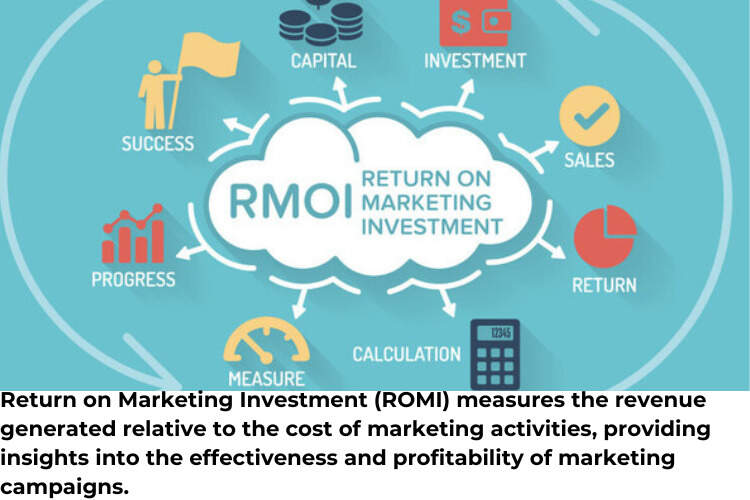
ROMI stands for “Return on Marketing Investment,” which measures the profitability of marketing campaigns by comparing the revenue generated with the costs incurred, providing insights into the effectiveness and efficiency of marketing efforts.ROMI in evaluating marketing performance accordingly
Differentiating ROMI from other marketing metrics such as ROI and ROAS.
Key Metrics and KPIs Return on Marketing Investment
Identifying relevant metrics and KPIs to measure marketing effectiveness.
Examples include customer acquisition cost (CAC), customer lifetime value (CLV), conversion rates, and revenue attribution accordingly
Data Collection and Attribution
Implementing robust data collection mechanisms to track marketing activities and outcomes.
Utilizing marketing attribution models to assign value to different marketing channels and touchpoints.
Calculating Return on Marketing Investment
Formulating the ROMI formula and methodology tailored to organizational goals and objectives.
ROMI = (Incremental Revenue from Marketing – Marketing Costs) / Marketing Costs)
Benchmarking and Comparative Analysis
Benchmarking ROMI against industry averages or competitors to assess performance accordingly
Conducting comparative analysis to identify strengths and weaknesses in marketing strategies.
Optimizing Marketing Investments
Analyzing ROMI results to allocate resources effectively across marketing channels and campaigns accordingly
Identifying underperforming areas and reallocating budgets to high-ROI initiatives accordingly
Long-Term Impact and Sustainability
Evaluating the long-term impact of marketing investments on brand equity, customer loyalty, and market share accordingly
Ensuring sustainability by focusing on strategies that deliver sustainable, long-term growth accordingly
Integration with Business Goals
Aligning ROMI analysis with broader business objectives to ensure marketing efforts contribute to organizational success accordingly
Incorporating ROMI into strategic planning and decision-making processes accordingly
Continuous Improvement and Iteration:
Establishing a culture of continuous improvement by analyzing ROMI results and refining marketing strategies accordingly.
Iteratively testing and optimizing marketing tactics to maximize ROMI over time.
Communication and Reporting- Return on Marketing Investment
Communicating ROMI findings and insights to key stakeholders, including executives, marketing teams, and finance departments.
Presenting ROMI data in a clear, concise manner to facilitate informed decision-making and strategic planning accordingly
